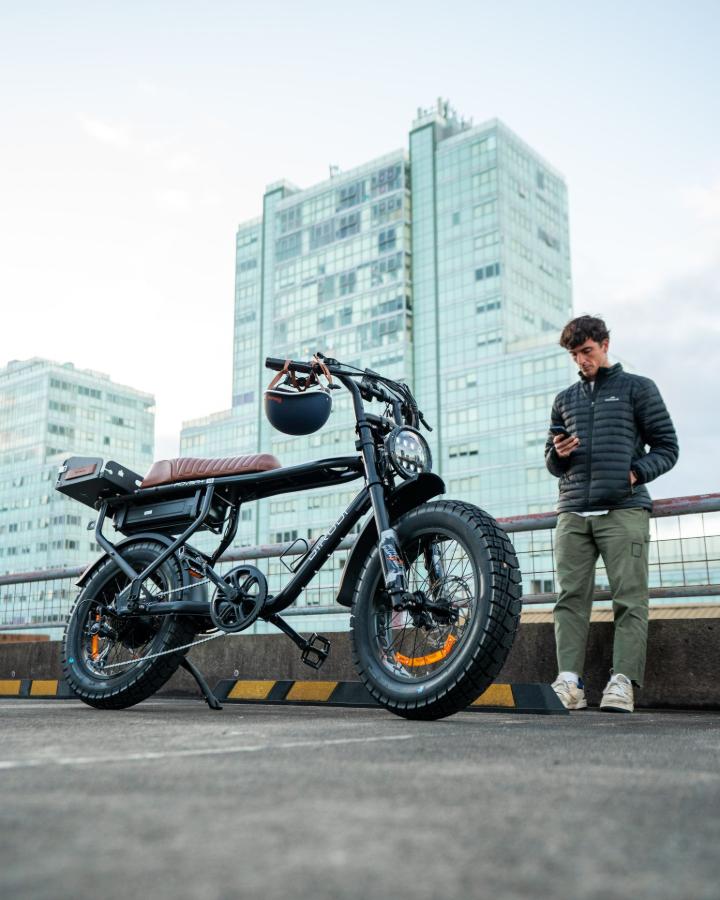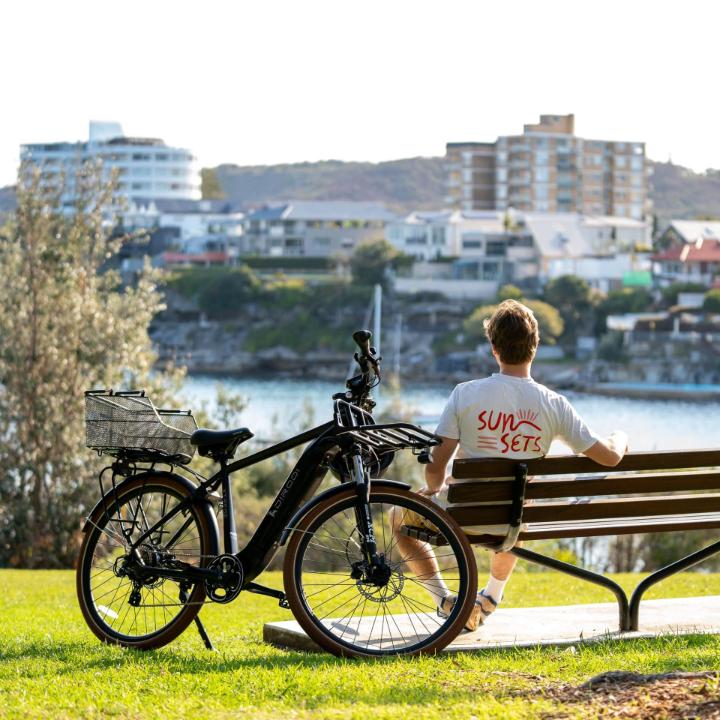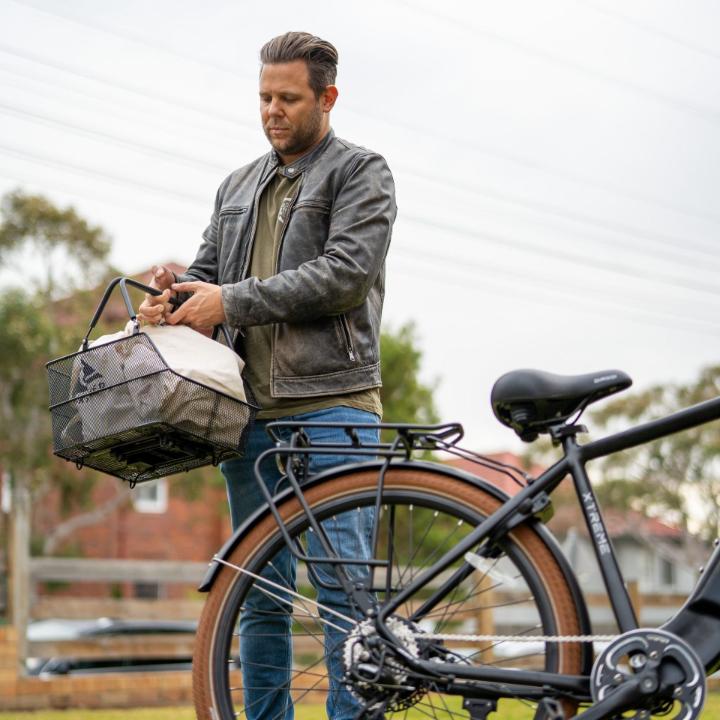Sydney is shifting gears—literally. What was once a niche interest among a few cycling enthusiasts has now turned into a city-wide movement. Electric bikes are fast becoming the transport of choice for Sydneysiders and visitors alike, weaving sustainability, convenience, and fun into the daily commute and weekend adventures. As fuel prices climb and the desire for greener travel intensifies, Sydney is emerging as Australia’s e-bike capital.
In 2024 alone, nearly two million shared e-bike trips were logged—a figure that has almost doubled in just a year. From early morning commuters to food delivery riders and tourists soaking in the skyline, electric bikes are redefining how people move through the city. This isn’t just a trend—it’s a transportation shift powered by technology and a growing cycling culture.
One of the main drivers behind this e-bike explosion is Sydney’s significant investment in cycling infrastructure. The city now features over 220 kilometres of dedicated cycleways and shared paths, offering safe and scenic routes through bustling neighbourhoods and peaceful green spaces. Trails like the Parramatta Valley, the leafy Cooks River corridor, and the iconic ride over the Sydney Harbour Bridge provide cyclists with a smooth and memorable experience. Soon, a long-awaited ramp to the Harbour Bridge will make it even easier for riders to glide across without lifting a finger—or their bikes up the stairs.

Sydney’s topography, once a challenge for traditional cyclists, is now a highlight for e-bike riders. Hills become gentle slopes with electric assist, and long rides feel like a breeze. Whether cruising along the glittering waters of Circular Quay or coasting under the shade of riverside trees, the journey is as enjoyable as the destination.
For daily commuters, e-bikes offer a golden alternative—no sweat, no stress, and no time wasted in traffic or on crowded trains. Many workplaces in the CBD now support this growing trend by offering bike parking, showers, and lockers, making the switch from car to cycle even easier.
E-bikes aren’t just convenient—they’re part of Sydney’s strategy to build a healthier, cleaner city. They emit no direct pollution, help ease road congestion, and still provide a decent workout, allowing riders to enjoy up to 90% of the fitness benefits of a regular bike without the effort of a punishing ride.
Tourists are joining the revolution too. Guided e-bike tours are now a popular way to see the city’s sights without breaking a sweat, and shared services like Lime and Beam have made spontaneous rides simple. Just hop on, ride, and park at one of the city’s growing number of designated zones—no fuss, no clutter.
As infrastructure improves, regulations evolve, and enthusiasm builds, Sydney is charging ahead as a leader in the e-bike revolution. Whether you're commuting, sightseeing, or just cruising for fun, there’s never been a more exciting—or electric—time to explore the Harbour City.
1. E-Bike Public Structures and Parking in Sydney
Sydney is rapidly adapting to the growing popularity of e-bikes by investing in infrastructure and parking solutions that support this sustainable mode of transport. With e-bike usage increasing among commuters, delivery riders, and tourists, public structures such as cycleways, parking bays, and charging facilities are becoming essential components of the city’s mobility landscape.
1.1. Expanding Cycleways and Public Infrastructure
Over the past few years, Sydney has significantly expanded its cycling infrastructure. The city now offers over 220 kilometres of separated cycleways and shared paths, making it safer and easier for e-bike users to move around without interfering with vehicle traffic. Key routes include the Parramatta Valley cycleway, the Cooks River cycleway, and the Foreshore Loop. These paths are designed to accommodate both traditional bicycles and e-bikes, with wider lanes and smoother surfaces that can handle higher speeds and heavier frames.

1.2. Secure Parking for E-Bikes
To support the growing number of e-bike riders, Sydney has been introducing public structures aimed at improving convenience. Secure parking is a critical area of focus. Public bike racks are being upgraded to fit bulkier e-bikes and cargo bikes, which often have larger frames and tires than regular bicycles. Many popular locations, such as transport hubs, shopping centres, and tourist hotspots, now have expanded parking zones to prevent clutter on footpaths.
1.3. Shared E-Bike Parking and Geofencing
Shared e-bike schemes, operated by companies like Lime, Beam, and HelloRide, have also influenced the development of structured parking. The City of Sydney has introduced designated parking bays for shared e-bikes to keep public spaces organized and safe. These zones are clearly marked and strategically located near train stations, bus stops, and major attractions, enabling seamless multimodal commuting.
To ensure compliance, geofencing technology is used to require riders to park within approved areas. Improper parking often results in penalties or restrictions on future rides, helping maintain order on busy streets and footpaths.
1.4. Charging Facilities and End-of-Trip Amenities
Another emerging feature is the introduction of e-bike charging facilities. While still limited, pilot projects have been launched to integrate charging stations at key public locations. These “e-micro hubs” support both private e-bike owners and delivery riders, allowing them to recharge batteries during the day. As e-bike usage continues to grow, the expansion of charging infrastructure is expected to become a priority.
Additionally, end-of-trip facilities are becoming more common. Many new commercial buildings in the Sydney CBD now include bike storage rooms, repair stations, and showers for employees who commute by e-bike. This initiative is strongly supported by Transport for NSW, which promotes active transport to reduce traffic congestion and emissions.
1.5. Council Efforts and Regulations
Local councils are working closely with shared e-bike operators to maintain orderly streets. For example, Waverley Council, which oversees Bondi Beach, has implemented strict parking and speed regulations for shared e-bikes to minimize disruption to pedestrians and maintain safety along busy coastal routes.

2. Scenic E-Bike Trails in Sydney
Sydney’s diverse landscape, with its sparkling harbour, lush national parks, and picturesque coastal routes, makes it a haven for e-bike enthusiasts. The city offers a range of scenic trails suitable for riders of all fitness levels, and the electric assist of an e-bike makes exploring Sydney’s hilly terrain a breeze. From coastal paths to riverside tracks, here are some of the best scenic e-bike trails in Sydney.
2.1. Centennial Parklands Loop
Located in the heart of Sydney, Centennial Parklands is one of the city’s most bike-friendly destinations. The park features a dedicated 3.8-kilometre cycling loop, perfect for leisurely rides on an e-bike. The area is surrounded by open fields, ornamental ponds, and shaded paths, offering a peaceful escape from the urban hustle. The flat terrain makes it ideal for beginners or those looking for a quick, scenic ride.
2.2. Sydney Harbour Bridge to Barangaroo
Few rides are as iconic as crossing the Sydney Harbour Bridge on an e-bike. Starting from Milsons Point, riders can enjoy panoramic views of the harbour, the Opera House, and Circular Quay. The journey continues into Barangaroo Reserve, a beautifully landscaped park with waterfront paths perfect for a relaxed ride. This short but scenic trail is a must-do for both tourists and locals.
2.3. Bay Run – Iron Cove
The Bay Run is a 7-kilometre loop around Iron Cove, offering a mix of waterfront views, parks, and calm suburban streets. Popular among joggers and cyclists, this trail is ideal for e-bike riders looking for a flat and scenic ride. With plenty of cafes and picnic spots along the way, it’s easy to make a day out of this leisurely loop.
2.4. Parramatta Valley Cycleway
Stretching approximately 15 kilometres, the Parramatta Valley cycleway connects Parramatta Park with Sydney Olympic Park, following the Parramatta River. Riders can enjoy a mix of riverfront views, parklands, and urban scenery along the route. The mostly flat and well-paved trail is perfect for e-bikes, and it’s a great way to explore Sydney’s western suburbs while staying close to nature.
2.5. Cooks River Cycleway
The Cooks River cycleway is a longer and more adventurous ride, spanning 30 kilometres from Homebush Bay to Botany Bay. Following the winding Cooks River, this trail takes riders past wetlands, parks, and leafy neighbourhoods. With its mix of urban and natural scenery, it’s one of Sydney’s most popular routes for e-bike riders who want a full-day adventure.
2.6. Eastern Beaches Coastal Ride
For breathtaking ocean views, the Eastern Beaches coastal ride is unmatched. This route connects Bondi Beach to Coogee Beach, with detours that allow riders to enjoy the famous Bondi to Bronte coastal walk from a different perspective. While some sections can be steep, an e-bike makes the climbs easy, allowing riders to focus on the stunning coastal scenery.

3. E-Bike Theft Protection and Secure Parking in Sydney
With the rising popularity of e-bikes in Sydney, concerns about theft and secure parking have become increasingly important. E-bikes, often costing between $1,500 and $5,000, are a significant investment, making them an attractive target for thieves. In response, riders, councils, and private operators are focusing on improved security measures and better parking solutions to protect these valuable bikes.
3.1. The Rising Need for E-Bike Security
Sydney has seen a steady increase in e-bike use for commuting, food delivery, and leisure. This surge, however, has been accompanied by a rise in bike thefts, particularly in busy urban areas and near transport hubs. Opportunistic theft often occurs when bikes are left unsecured or locked with inadequate devices. High-value e-bikes, especially those used for delivery work, are frequently targeted due to their resale value and the demand for spare parts.
To address this, riders are turning to stronger security practices, including using heavy-duty locks, removing batteries when parked, and choosing safe parking locations. Awareness campaigns from organizations such as Bicycle NSW encourage cyclists to invest in quality U-locks or chain locks, which are harder to cut compared to basic cable locks.
3.2. Secure Public Parking Facilities
Sydney is gradually improving its infrastructure for secure bike parking. Many train stations, ferry terminals, and bus interchanges now offer Bike Sheds and Bike Lockers, which are secure, covered facilities designed to protect bikes from theft and weather. These facilities, managed by Transport for NSW, can be accessed using registered Opal card accounts, making them a convenient and safer choice for commuters.
In addition, local councils such as the City of Sydney have expanded public bike rack installations in high-traffic areas, particularly near shopping centres, office precincts, and tourist destinations. Some racks are designed with space for larger and heavier e-bikes, including cargo models.
3.3. Private and Commercial Solutions
Private businesses and parking operators are also stepping in to provide secure parking for e-bike users. End-of-trip facilities in commercial buildings, especially within the Sydney CBD, often include secure bike rooms, CCTV surveillance, and card-access systems. These facilities are popular among commuters who want peace of mind while leaving their bikes during work hours.
Shared e-bike operators such as Lime and Beam have introduced designated parking hubs equipped with technology to encourage proper parking and prevent misuse. These hubs are strategically located and often monitored to reduce the risk of theft or vandalism.
3.4. Practical Tips for E-Bike Theft Protection
For individual riders, combining multiple security measures is key. Experts recommend using two locks (e.g., a U-lock combined with a cable lock) to secure both the frame and wheels. Detachable components, such as batteries and displays, should be removed when leaving the bike unattended. Parking in well-lit, busy areas also reduces the risk of theft.
Insurance for e-bikes is another growing trend, offering financial protection in case of theft or damage. Many Australian insurers now offer specialized policies tailored for high-value bikes, which can provide peace of mind to riders.
Further reading: Electric Bike Laws & Road Rules in Australia
4. Electric Bike Laws and Rules in Melbourne, Australia
As e-bikes grow in popularity across Melbourne and Australia, it's crucial for riders to understand the laws that govern their use. Whether you're commuting through the city, riding for leisure, or exploring Victoria’s scenic trails, staying compliant with local regulations ensures a safe and enjoyable experience.
4.1. Motor Power
E-bikes in Australia are generally classified into two main legal categories, based on how the motor assists the rider and the maximum continuous power output.
1. Pedal-Assisted E-Bikes (Up to 250 Watts): The most common road-legal e-bikes in Australia are pedal-assist models, often referred to as "Pedelecs." These bikes provide electric assistance only when the rider is pedaling. According to national law (except in NSW), these bikes must have a motor with a maximum continuous power output of 250 watts. The motor must cut off at 25 km/h, meaning electric assistance stops once you reach that speed.
A common misconception is that these bikes cannot have throttles. However, a throttle is allowed — as long as its function is limited to assisting only up to 6 km/h. This feature, known as a "start assist," helps the rider get rolling, especially when starting on an incline or from a full stop. After reaching 6 km/h, the rider must pedal to maintain assistance.

2. Throttle-Assisted E-Bikes (Up to 200 Watts): The second category includes e-bikes that can be powered entirely by throttle, without pedaling. These are limited to a 200-watt motor output, and like their 250W counterparts, the motor must stop assisting once the bike hits 25 km/h. However, due to the limited power, 200W throttle-only bikes struggle on hills and are less commonly manufactured or used in Melbourne.
As of February 2023, NSW updated its e-bike laws to allow 500W pedal-assist e-bikes, while maintaining the same throttle limitations (200W max). However, this increase in power does not apply in Victoria, where the 250W limit still stands for pedal-assist models.
4.2. Speed Limit
Although legal limits cap assistance at 25 km/h, e-bikes are often capable of higher speeds. For example:
- A 250W motor might reach speeds of 30 km/h with moderate pedaling.
- A 500W e-bike can reach 35–40 km/h.
- A 750W motor could go up to 50 km/h, depending on terrain and rider input.
However, using a high-powered e-bike above legal limits on public roads can be illegal. Some e-bikes, such as the DiroDi Rover 750W, come with settings that allow power limiting to 250W for road use. Still, authorities have not clearly defined whether this guarantees compliance, so it’s advised to consult your local transport department before using such bikes on public roads.
4.3. Helmets
Across all Australian states, including Victoria, wearing a helmet while riding an e-bike is mandatory. The helmet must be approved and certified to Australian Standard AS/NZS 2063, with newer models (post-2011) marked for compliance. Failure to wear a helmet can result in fines of up to $300 in Victoria — but more importantly, helmets help prevent serious head injuries in accidents.
4.4. Carrying Passengers
The legality of carrying passengers depends on who the passenger is and how they’re being transported:
- Children can legally ride on e-bikes using certified child seats or bike trailers.
- Carrying adult passengers is generally not allowed, unless your bike is specifically designed and approved for it — which most standard e-bikes are not.
4.5. Licensing, Registration, and Road Use
You do not need a driver’s license to ride a legal e-bike in Australia. E-bikes are not required to be registered or insured like motor vehicles, as long as they conform to the definitions laid out by the Australian Road Rules:
- Throttle-assisted: max 200W, up to 25 km/h
- Pedal-assisted: max 250W, throttle assist only up to 6 km/h, also limited to 25 km/h

4.6. E-Bike Rules Specific to New South Wales
If you’re planning on cruising around town on an electric bike in NSW, especially in Sydney, you need to consider that the cycling traffic in Sydney is a bit denser than in most other cities. So, in order to avoid accidents, it is suggested that you take extra precautions. Here is what you need to keep in mind to stay safe:
Stay on bike lanes and paths in Sydney unless you are sure that the path is safe enough.
Throughout the city, there are designated bike lanes and paths marked by blue or green signage with white bicycle symbols. You must use these lanes, and it is illegal to ride your electric bike in designated pedestrian areas. Also, remember that as a cyclist, you cannot ride on any part of the Sydney Harbour Bridge other than the cycleway.
As mentioned above, most rules and regulations in different states of Australia are similarly practiced. Check out our guide to Electric Bike Laws & Road Rules in Australia for a more detailed explanation of the laws in every Australian state. If you want to know more about the amount of fines and other rules in the state of New South Wales, check the link below:
http://roadsafety.transport.nsw.gov.au/stayingsafe/bicyclists/cyclingrules.html